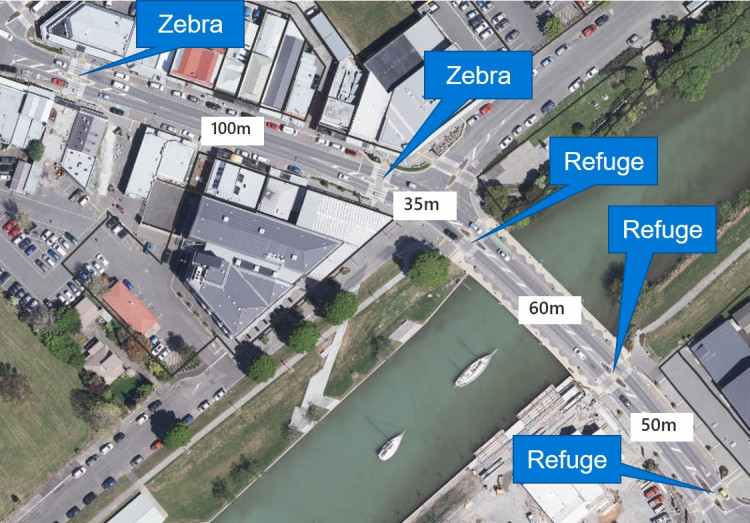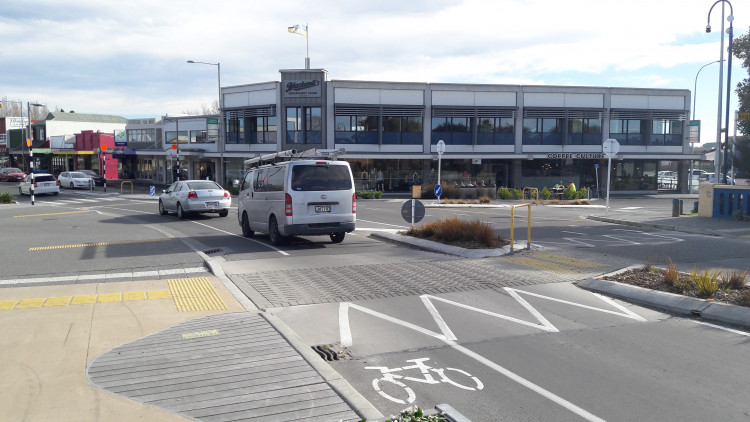Crossing points focus pedestrian movements to specific locations, therefore the location of crossings is important. Crossings that meet the seven pedestrian network characteristics will help to support walkable places.
PNG: Pedestrian network characteristics
The spacing and frequency of crossings along a street depends on the street type, land use and built environment, and pedestrian desire lines. Existing and projected crossing demand should also be considered.
Research suggests that at grade crossings should be provided every 80 to 100m in urban environments[1].
Another rule of thumb is that if it takes a person more than 3 minutes to walk to a crossing, wait to cross a street, then resume their journey, they may decide to cross along a more direct, but unsafe or unprotected route.
The type of crossings along a street and whether they provide priority to pedestrians or not is also an important consideration. It may be appropriate to provide priority crossings at key locations (for example intersection signals) along with non-priority crossings or aids (for example pedestrian refuges) to provide convenient choices for all pedestrians. This arrangement provides for people who may prefer or require crossings where they have priority, but also provides more frequent crossing opportunities for people who are comfortable finding a gap in traffic to cross.
An example of frequent crossings of different types through a town centre main street is shown below.

Spacing and type of crossings along a town centre main street. (Source: Canterbury Maps)

Frequent crossing opportunities along a town centre main street, Kaiapoi. (Photo: Jeanette Ward)
[1] Global Designing Cities Initiative. (n.d.). Designing Streets for People(external link) from Global Street Design Guide